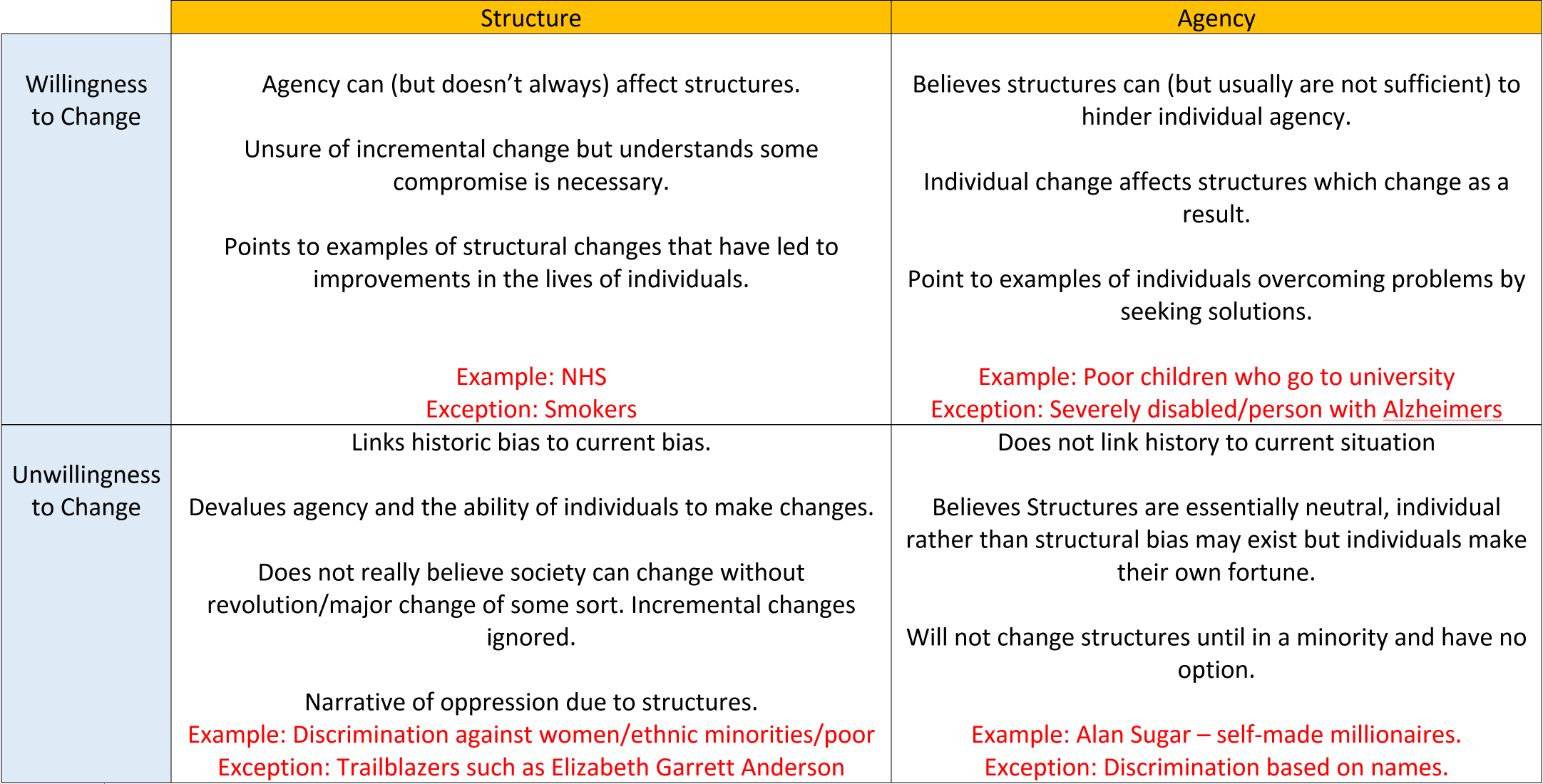Structure Vs Action?
During my Sociology at A-Level and later on for my Masters in Political Science, I studied both Structure and Agency (or Action) theories.
Structuralists would include Marxists, Feminists, Critical Race Theorists emphasise how the structures in society form, how ideas and rules are made normative and how this results in bias and discrimination towards certain groups. However, it is also the case that by focusing only on gender, for example, one can miss other structural elements that affect individuals – e.g. working hours. A culture of long working hours is not sexist per se but it can and does exclude women with children all the same.
These theories are best when explaining systematic biases within systems and why certain divisions exist as well as the ideas that emerge from them to maintain systems. For example, the use of stereotyping to impact on our beliefs about certain groups of people and how it restricts them.
The structure preserves itself. Therefore, such theorists have tended to favour revolutionary ideas to enact social change. The structure needs to be torn down root and branch so that all the ideas associated with it are gone because while they remain they can influence people who will then be more likely to believe and reinforce these structures.
Structure theories lend themselves to ‘false consciousness’ narratives and create a zero-sum game situation. The current prevalence of the idea of oppression also stems from this idea that we are, in essence, at the mercy of the structures in society.
Agency theorists on the other hand, such as Parsons, focus on communication, purposes, beliefs and their impact on our actions. These theorists don’t accept that we are products of structures alone. These theories best explain why changes do occur without radical change, why societies evolve and affect the social structures and systems. There is greater emphasis on the importance of change within individuals, communities and societies not just through leadership but changes in how we think. However, they fall down on the issue of where the content of our beliefs come from and the extent to which structures influence them. It is also an assumption that all people are able to exercise agency in roughly similar ways so does not take into account structural factors which inhibit agency.
Gidden’s Structuration Theory was an attempt to bring the two together. I recall one International Relations lecturer likening it to a tennis match. The ball is being sent back and forth across the court so fast that the ball begins to blur but in the end, while close, synthesis does not occur. The essential question of which is more important remains and the more one goes into it, the more chicken and egg it becomes.
I think individual differences here are important. It seems evident that some find it harder to think outside the norm, shed stereotypes, push boundaries, change their thinking and, therefore, circumstances. I also believe it is true to say that no person does this constantly in all aspects of their life. A person may be willing to do this as a teacher but not as a parent. Change their ideas at work but not their ideas about Art. We are all a mixture of the radical and the conservative. It is probably necessary for our mental health.
I just saw it all as a Carroll Diagram so threw one together.

Ultimately, both structures and actions matter. There is no point pretending that we live in an equal society where everyone has the same opportunities. Equally, to state that we have no control over the choices we make reduces us to mere puppets. No one way of looking at things is without exception.
It is with this in mind that my next post will focus on structure and agency as I see it affecting Behaviour Management in schools.
P.S.: I know that there are gaps in my knowledge on this so feel free to suggest reading or links to more recent developments.



February 29, 2016 @ 8:10 pm
Reblogged this on The Echo Chamber.
February 29, 2016 @ 10:44 pm
Try Margaret S Archer, Realist Social Theory. Excellent treatment of structure and agency through reflexivity. Critiques Gidden’s structuration effectively. Interesting check it out.
February 29, 2016 @ 11:01 pm
Thanks for that!!